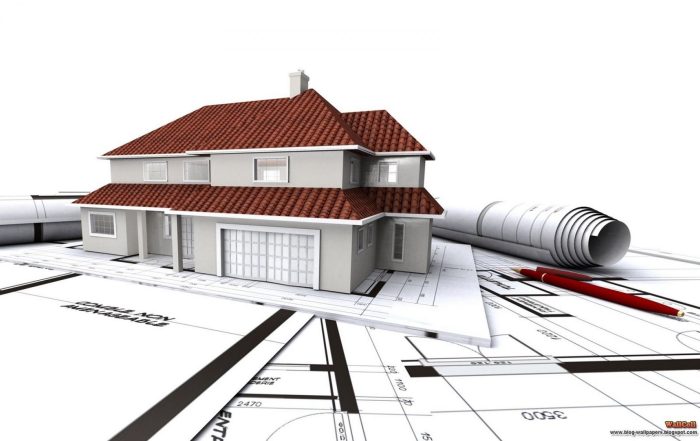
The Ultimate Guide to Home Remodeling in Miami: Steps Every Homeowner Should Know
Home remodeling is an exciting yet complex journey that can significantly enhance the value and comfort of your living space. For homeowners in Miami, the vibrant culture and unique climate add another layer of consideration to the remodeling process. Whether you’re looking to update your kitchen, expand your living area, or create a serene outdoor oasis, understanding the steps involved in home remodeling is crucial. This guide will walk you through the essential stages, ensuring your project runs smoothly from start to finish.

Step 1: Define Your Goals Before any Home Remodeling Projects
Before diving into any home remodeling project, the first step is to clearly define your goals. What do you want to achieve with your remodel? Are you looking to increase your home’s value for a future sale, or are you focused on creating a more functional and aesthetically pleasing space for your family? Take the time to list your priorities, which could include enhancing energy efficiency, improving layout, or simply modernizing outdated features.
In Miami, homeowners often seek to capitalize on the region’s beautiful weather by incorporating outdoor living spaces. Consider your lifestyle and how you wish to use your home. Do you entertain often? If so, an open floor plan with a seamless transition to outdoor areas might be ideal. If you have a growing family, you may prioritize additional bedrooms or multi-functional spaces. By clearly outlining your goals, you’ll have a solid foundation to guide your decisions throughout the home remodeling process.
Step 2: Set a Budget
Once you have a clear vision of your home remodeling goals, the next step is to establish a realistic budget. Home remodeling can range from a minor cosmetic update to a complete overhaul, and costs can vary dramatically based on scope, materials, and labor. In Miami, where the cost of living can be high, it is essential to consider all potential expenses, including permits, contractor fees, materials, and unexpected contingencies.
Start by researching the average costs associated with your desired remodel. Online resources, local contractor estimates, and discussions with friends or family who have undertaken similar projects can provide valuable insights. Once you have a ballpark figure, allocate funds for each aspect of the project and include a contingency reserve of about 10-20% for unexpected expenses. A well-planned budget will not only keep you on track financially but also help you make informed decisions throughout the remodeling process.
Step 3: Research Local Regulations
Miami has specific building codes and zoning regulations that homeowners must adhere to when undertaking any home remodeling project. Before you begin, it is crucial to familiarize yourself with these regulations to avoid potential pitfalls. Research local laws regarding permits, inspections, and any restrictions that may apply to your property, particularly if you live in a historic district or a neighborhood with a homeowners’ association (HOA).
Understanding the regulations can save you time and money in the long run. For instance, failing to obtain the necessary permits can result in fines or the requirement to undo completed work. Many homeowners find it beneficial to consult with local building departments or hire professionals who are well-versed in Miami’s regulations. This proactive approach ensures that your project complies with all legal requirements, allowing you to focus on the creative aspects of your remodel.
Step 4: Hire a Reliable General Contractor
Selecting the right general contractor is one of the most critical steps in the home remodeling process. A reliable contractor will not only bring your vision to life but also ensure that the project runs smoothly and stays within budget. Begin your search by asking for recommendations from friends, family, or real estate professionals in Miami. Online reviews and ratings can also provide insights into a contractor’s reputation.
When interviewing potential contractors, ask about their experience with similar projects, their licensing and insurance, and their approach to project management. Request references and take the time to follow up with previous clients to gauge their satisfaction. A good contractor will communicate effectively, provide a detailed estimate, and be transparent about timelines and potential challenges. Building a strong relationship with your contractor is essential, as they will be your partner throughout the remodeling journey.
Step 5: Design Your Space
With your goals defined, budget set, and contractor on board, it’s time to move on to the design phase. This is where your vision begins to take shape, and creativity can flourish. Collaborate closely with your contractor or a professional designer to create a functional layout that aligns with your goals and lifestyle. In Miami, where outdoor living is a significant aspect of home design, consider how to integrate indoor and outdoor spaces seamlessly.
During the design process, think about the materials, colors, and finishes that will enhance your home’s aesthetic. Miami’s tropical climate may influence your choices, favoring materials that withstand humidity and heat while still offering style and comfort. Utilize design software or mood boards to visualize your ideas and ensure that every detail aligns with your overall vision. Engaging in this creative process can be one of the most rewarding aspects of home remodeling, as you see your dream space come to life on paper.
Step 6: Obtain Necessary Permits
Once the design is finalized, the next step is to obtain the necessary permits for your home remodeling project. This process can vary depending on the scope of work and local regulations. Your contractor should be familiar with the permitting process in Miami and can often handle this on your behalf. However, it’s essential for you as a homeowner to be aware of what permits are required.
Common permits may include those for structural changes, electrical work, plumbing modifications, or any changes to the exterior of your home. The permitting process can take time, so it’s wise to start this step as soon as your design is ready. Having the proper permits in place ensures that your project complies with local laws and protects you from potential legal issues down the road.
Step 7: Prepare for Construction
As your home remodeling project approaches the construction phase, preparation is key to minimizing disruption to your daily life. Depending on the extent of the remodel, you may need to relocate temporarily or set up a designated area within your home to live comfortably during construction. Communicate with your contractor about the timeline and what to expect during the process.
It’s also beneficial to prepare your home by clearing out the areas that will be remodeled. This not only makes it easier for the construction crew to work but also protects your belongings from dust and damage. Consider setting up a plan for managing noise and dust, especially if you have children or pets. Being proactive and organized during this phase can help ensure a smoother construction experience.
Step 8: Execute the Remodel
With all preparations in place, the execution phase of your remodel begins. This is where your vision transforms into reality. Throughout the construction process, maintain open lines of communication with your contractor. Regular check-ins can help address any questions or concerns that arise and ensure that the project stays on track.
In Miami, it’s essential to be mindful of the weather, as rain or humidity can impact construction timelines. Your contractor should have contingency plans in place for such events. As the work progresses, take the time to visit the site regularly to see how things are unfolding and to provide feedback. This hands-on approach can help you stay engaged in the home remodeling process and make necessary adjustments as needed.
Step 9: Final Inspections and Touch-ups
Once the construction is complete, the final inspection phase begins. This step is crucial to ensure that everything meets local building codes and that the work has been completed to your satisfaction. Your contractor will typically handle the final inspections, but as the homeowner, it’s essential to be involved. Walk through your newly remodeled space to identify any areas that may need touch-ups or adjustments.
This is also the time to address any final details, such as installing fixtures, painting touch-ups, or landscaping. Ensure that all work is completed to your standards before officially signing off on the project. A thorough final inspection not only guarantees that your remodel is up to code but also ensures that you’re completely satisfied with the results.
Step 10: Enjoy Your Newly Remodeled Home
After months of planning, budgeting, and construction, it’s time to enjoy your newly remodeled home. Take a moment to appreciate the hard work and effort that went into transforming your space. Whether you’re hosting friends and family, relaxing in your new living area, or enjoying the outdoor oasis you’ve created, the satisfaction of seeing your vision come to life is unparalleled.
Moving forward, consider how you can maintain and enhance your remodeled space. Regular upkeep will ensure that your home remains a comfortable and stylish retreat for years to come. Additionally, take the time to reflect on the remodeling process. What worked well? What would you do differently next time? These insights will serve you well for any future projects.
In conclusion, home remodeling in Miami is a rewarding endeavor that can significantly improve your quality of life and property value. By following these ten essential steps, you can navigate the remodeling process with confidence and achieve the home of your dreams. Remember, the key to a successful remodel lies in careful planning, open communication, and a willingness to adapt as you go. Happy remodeling!








